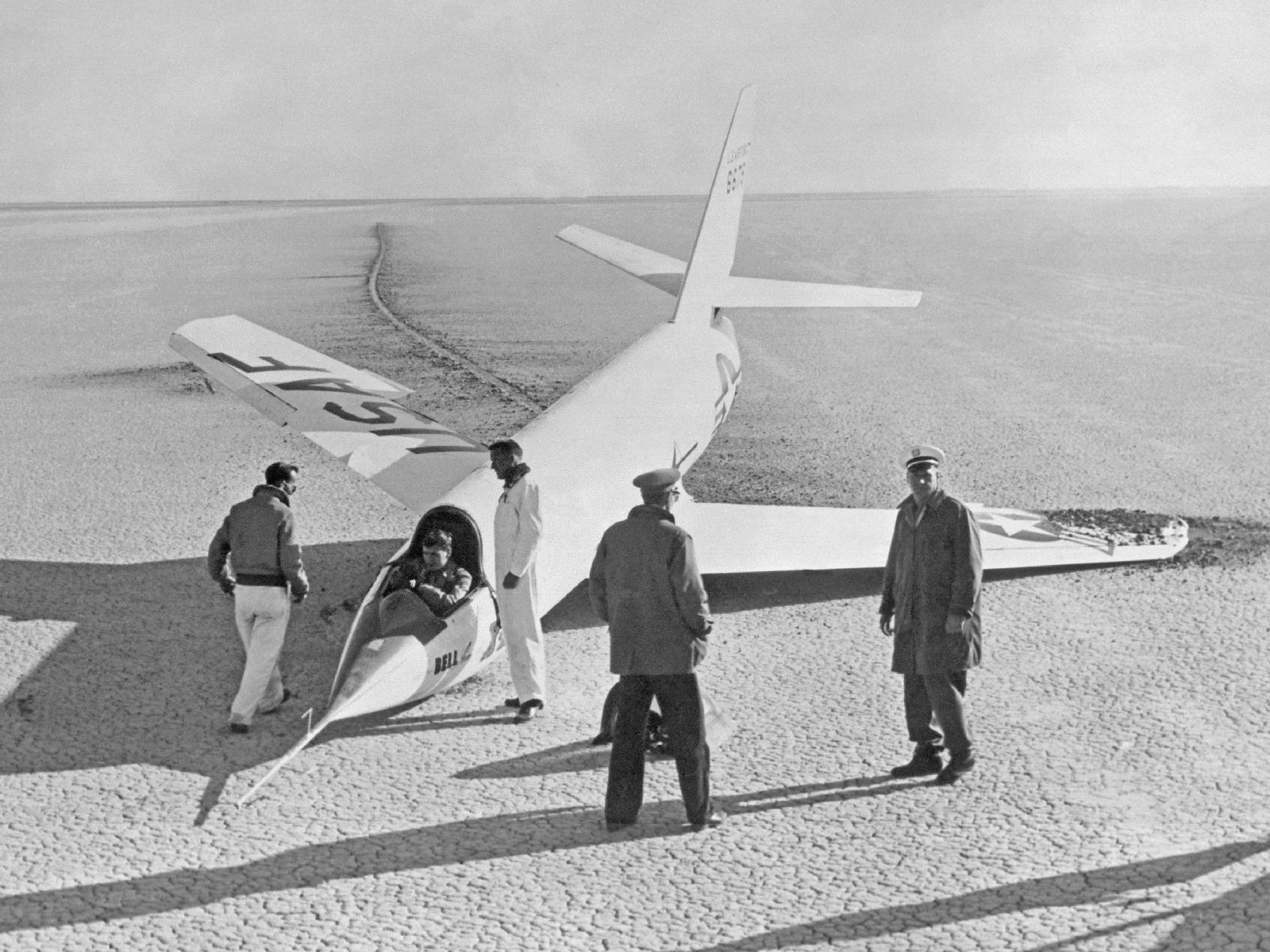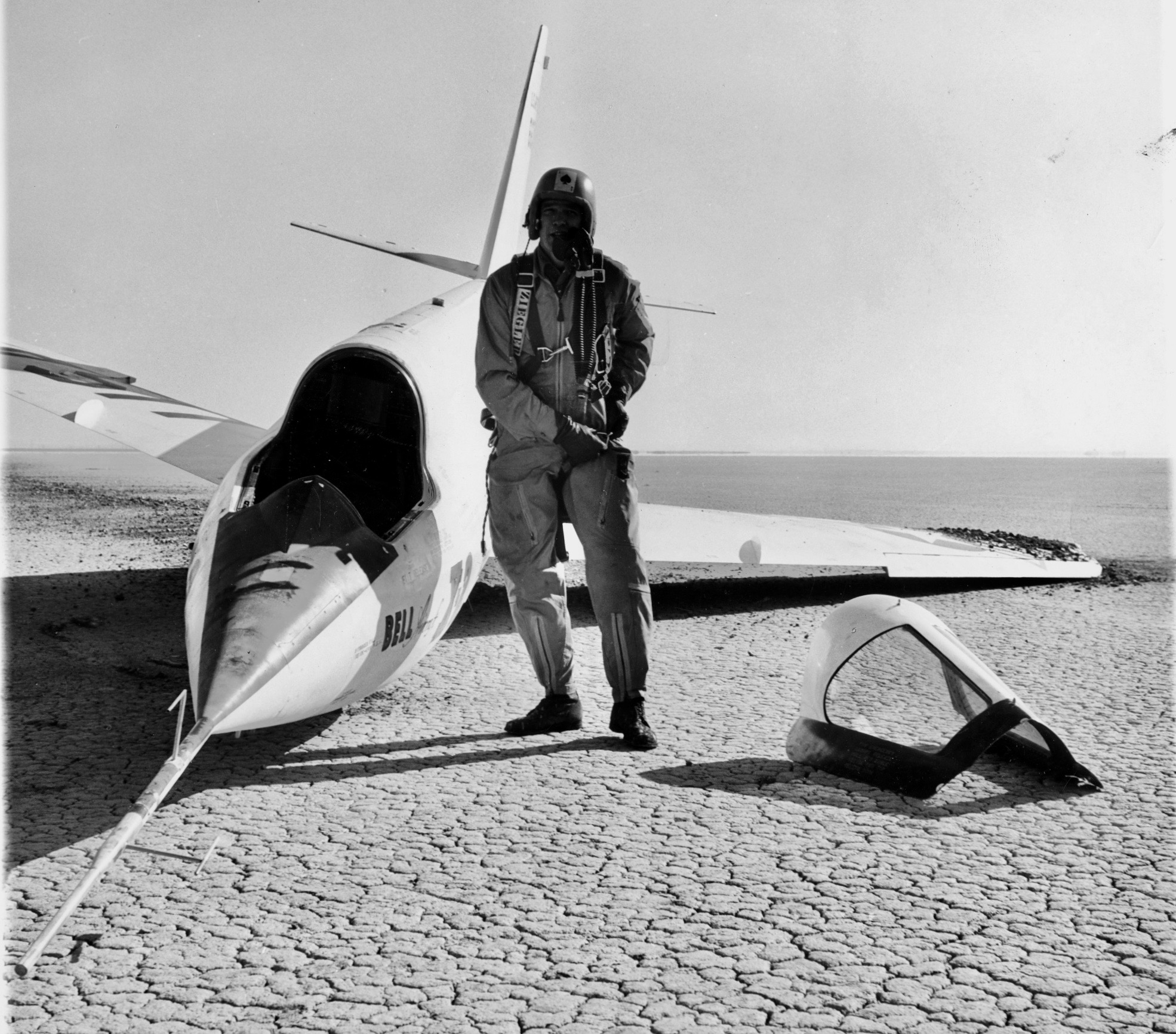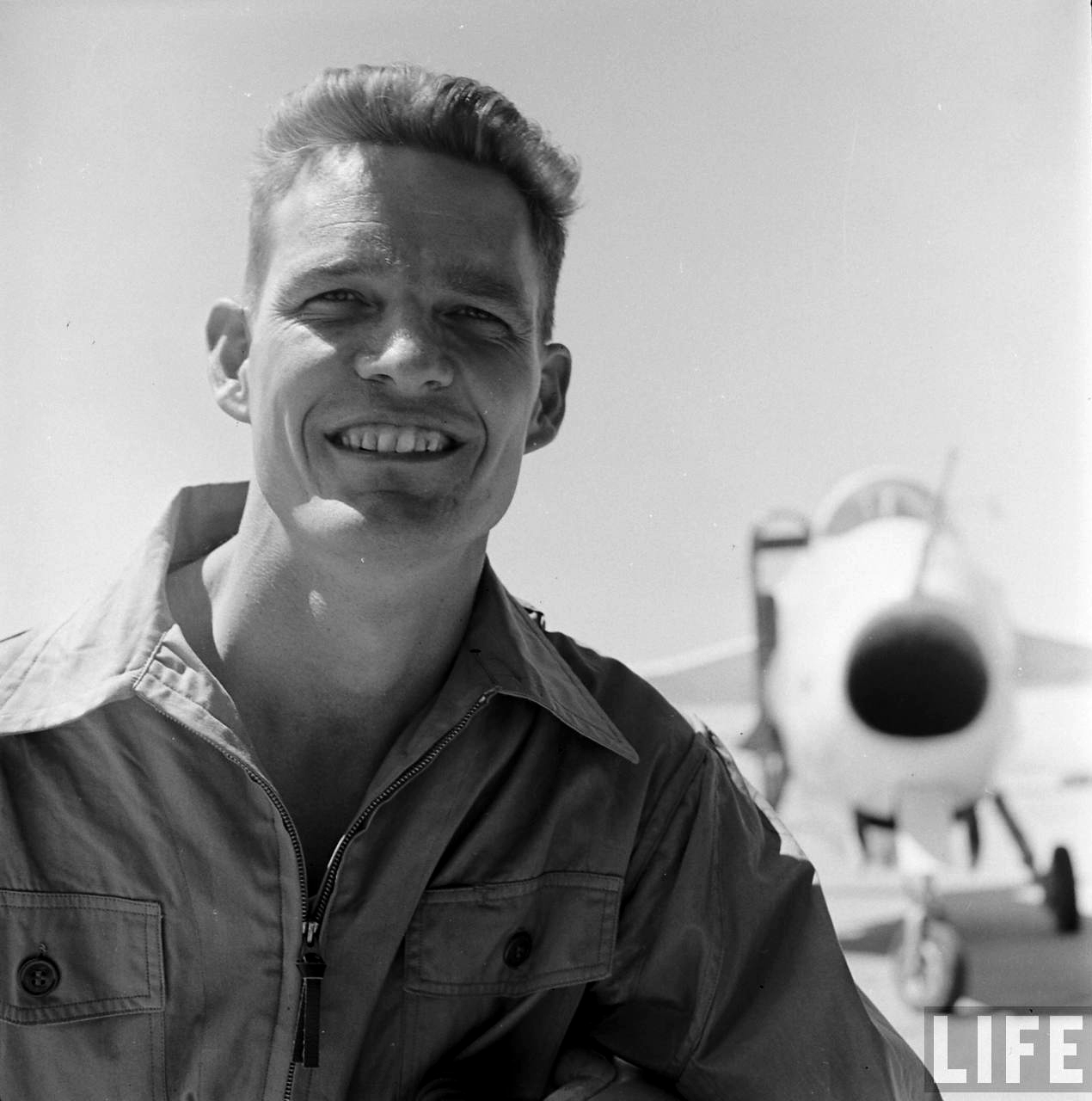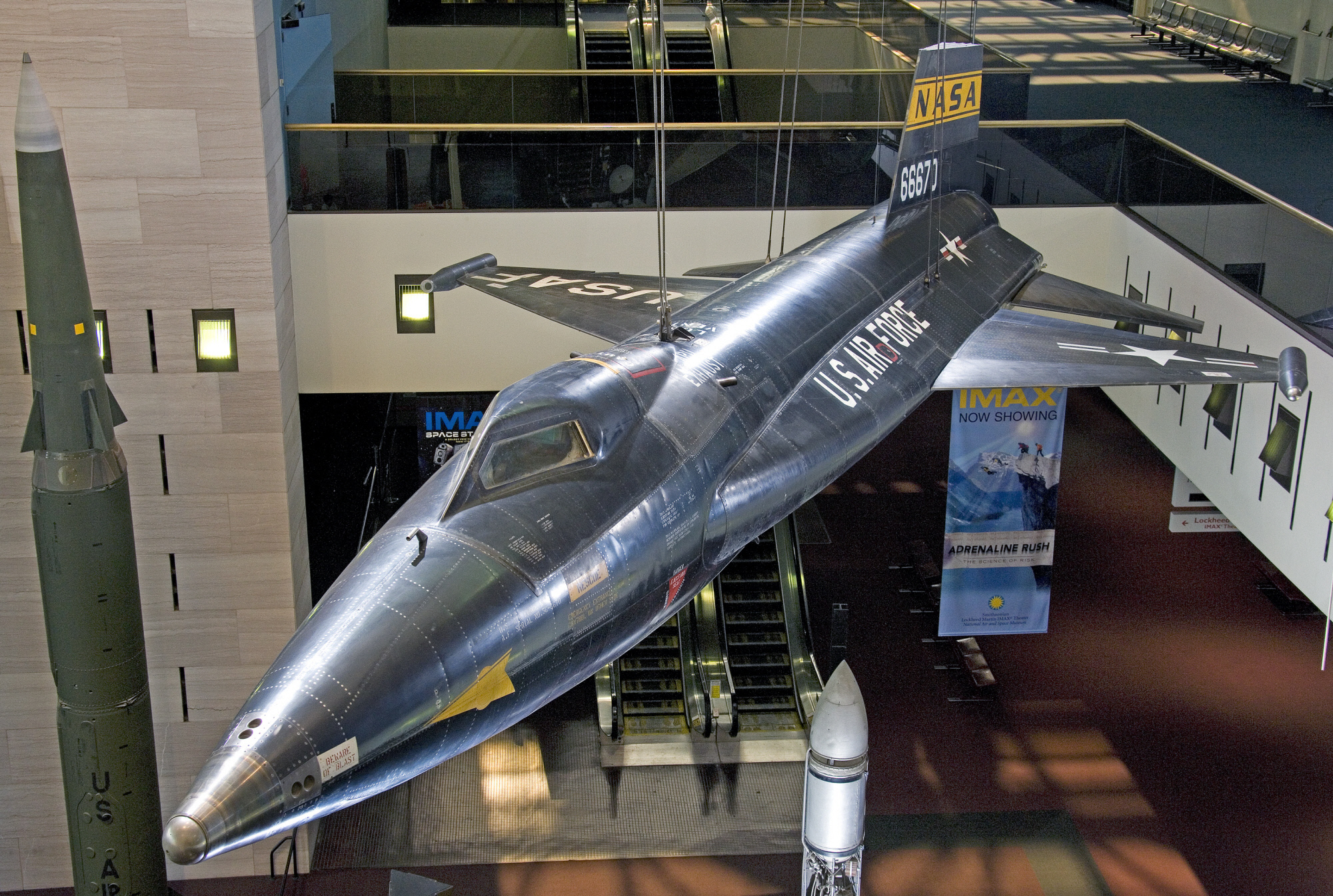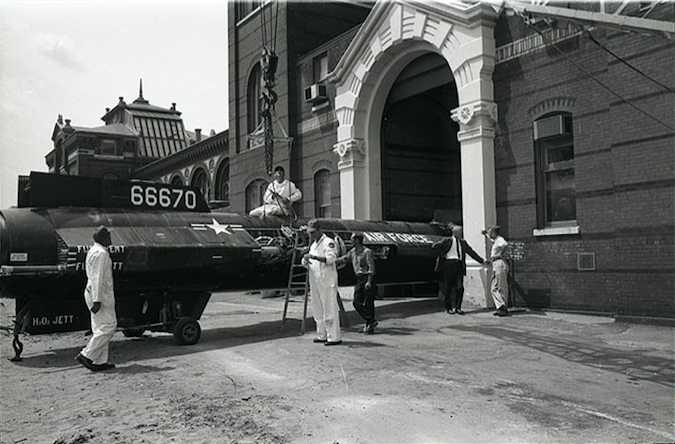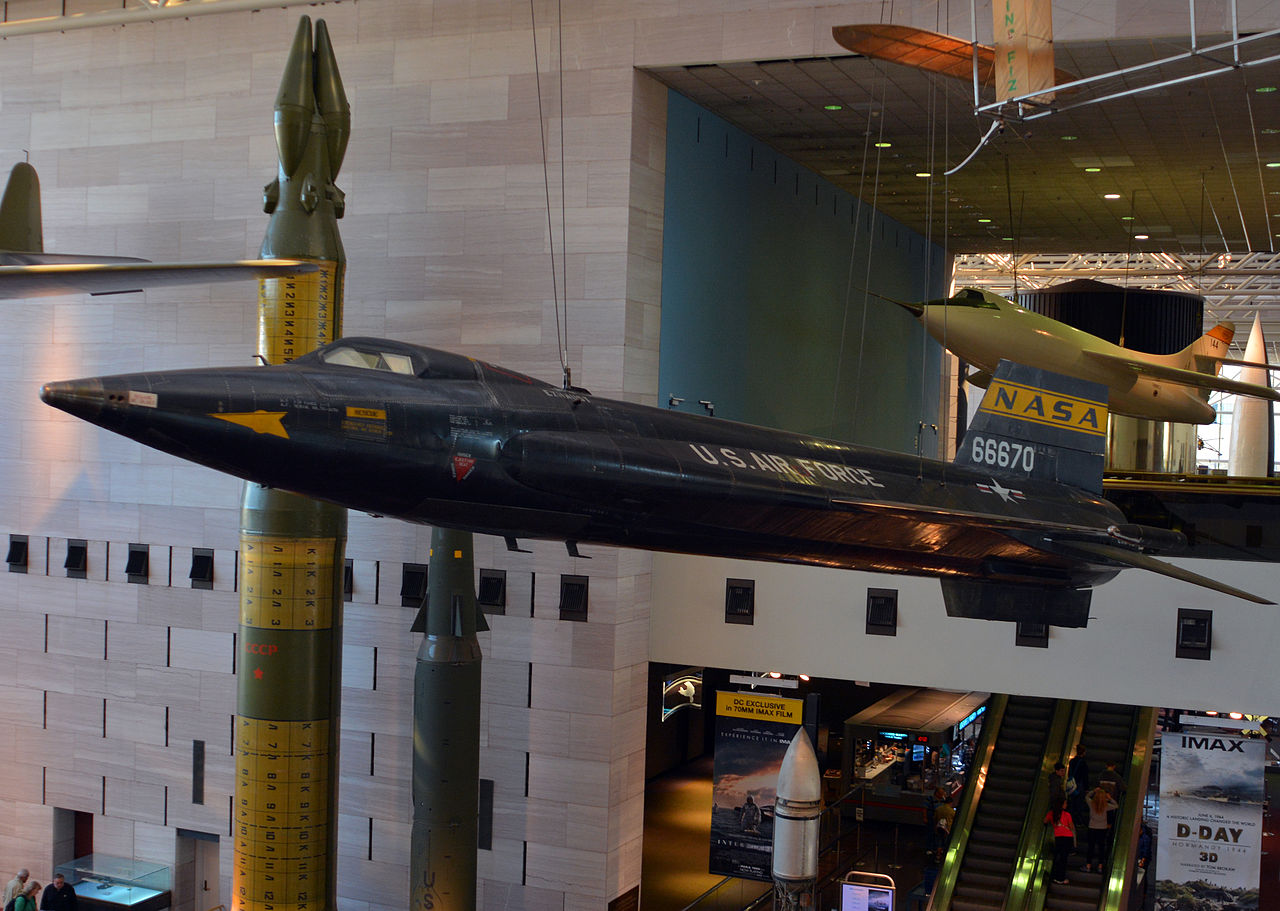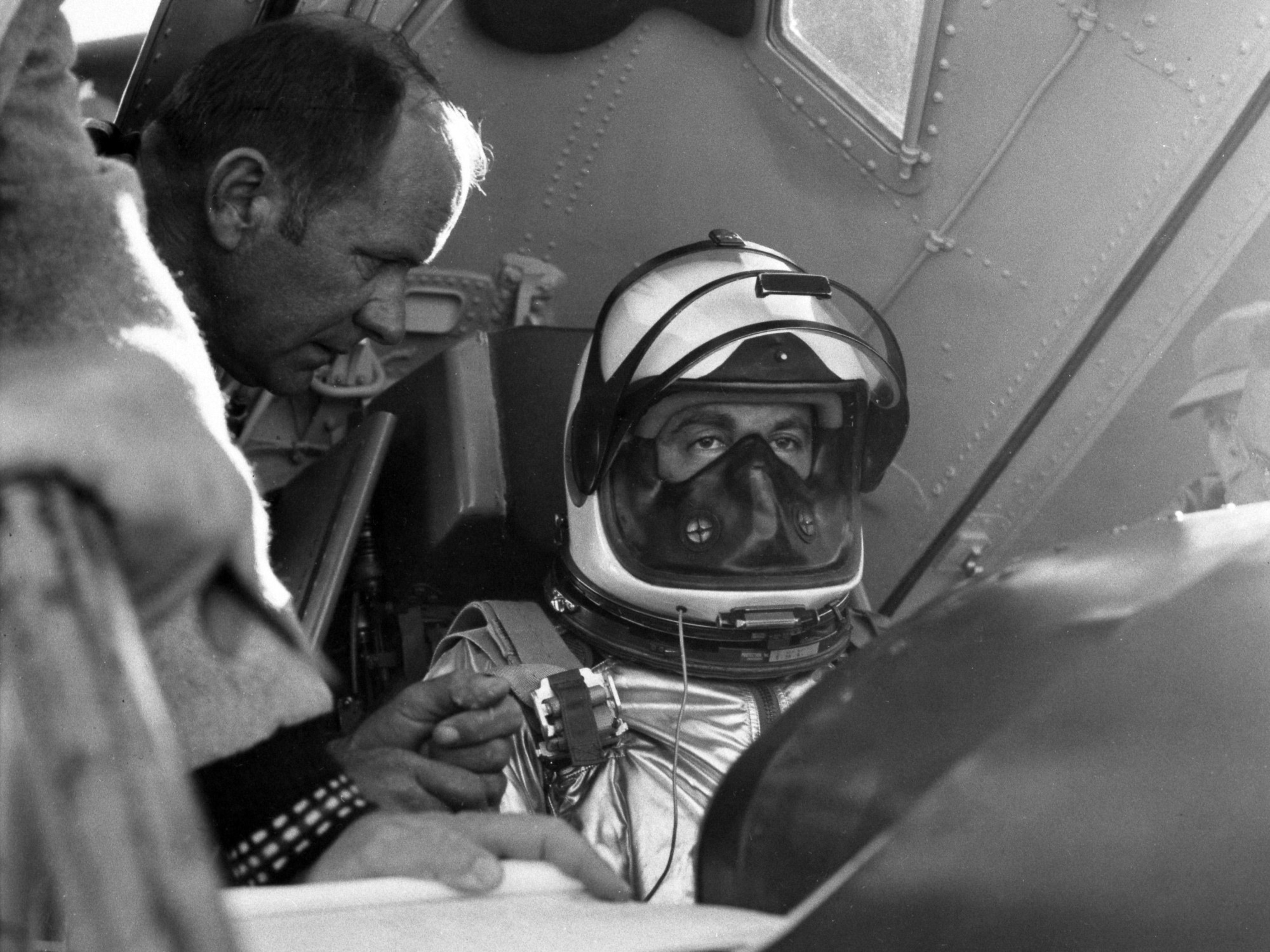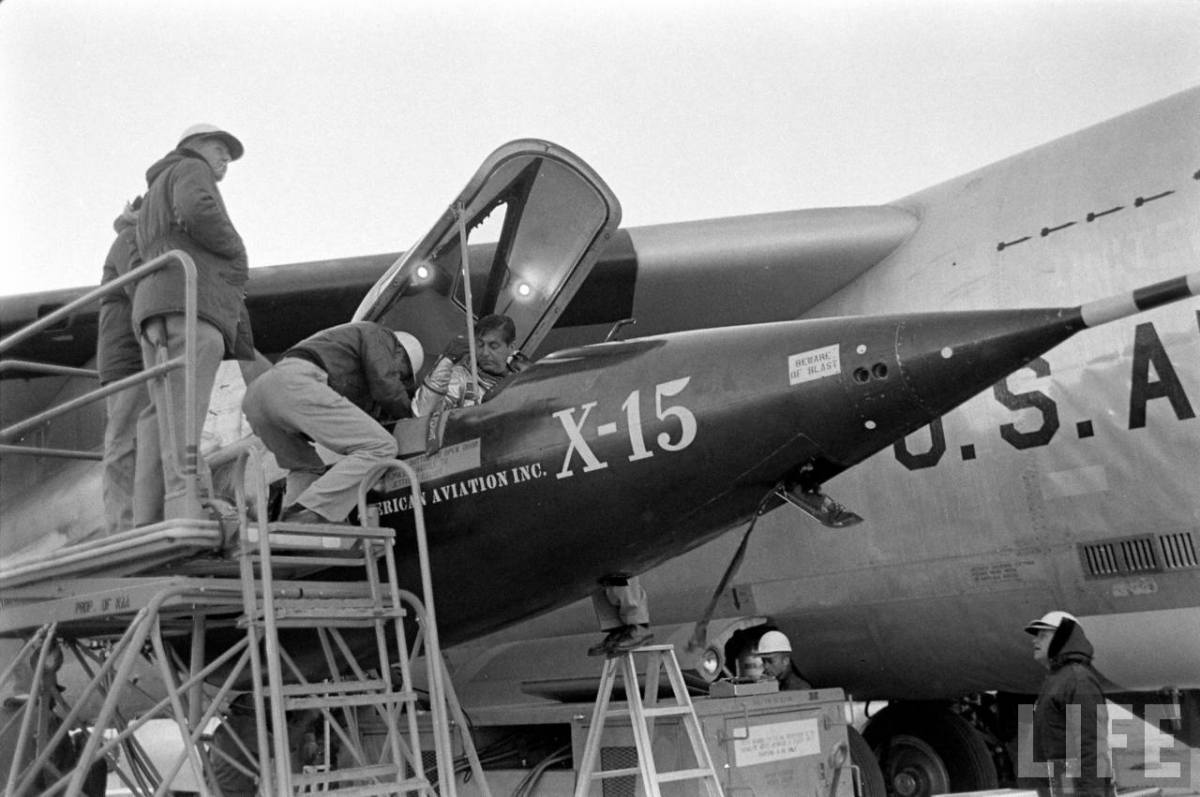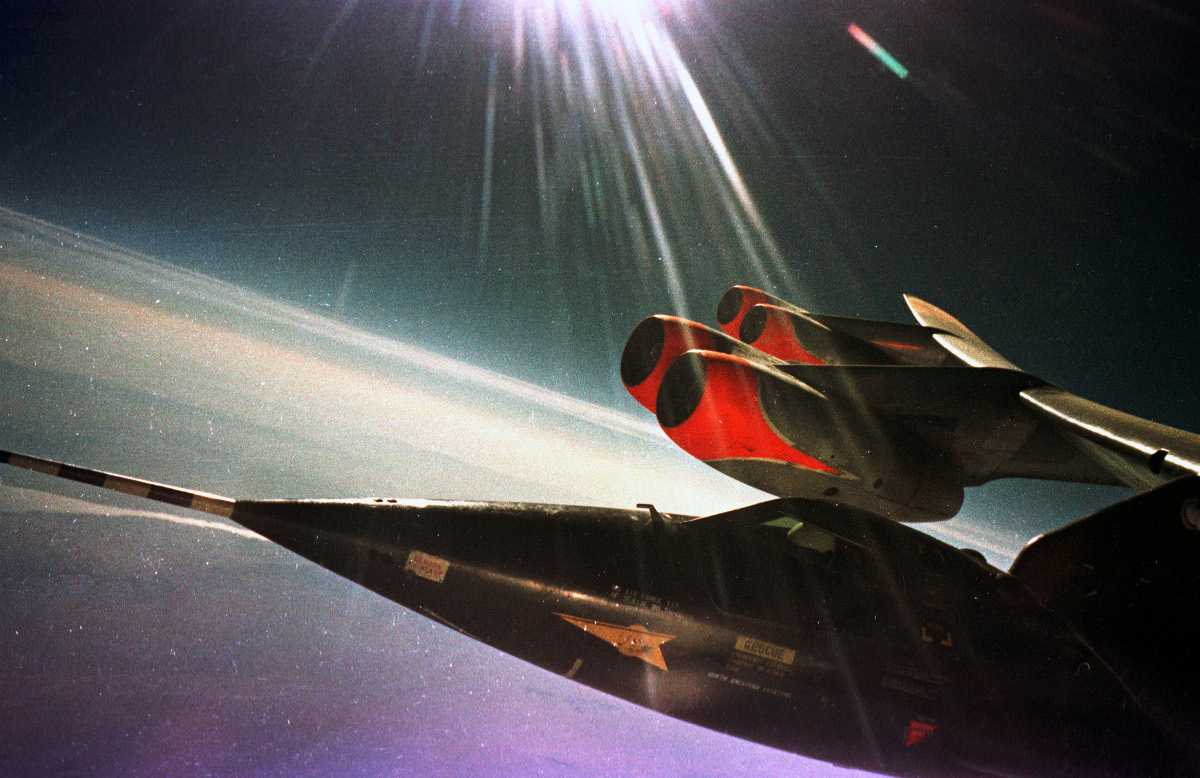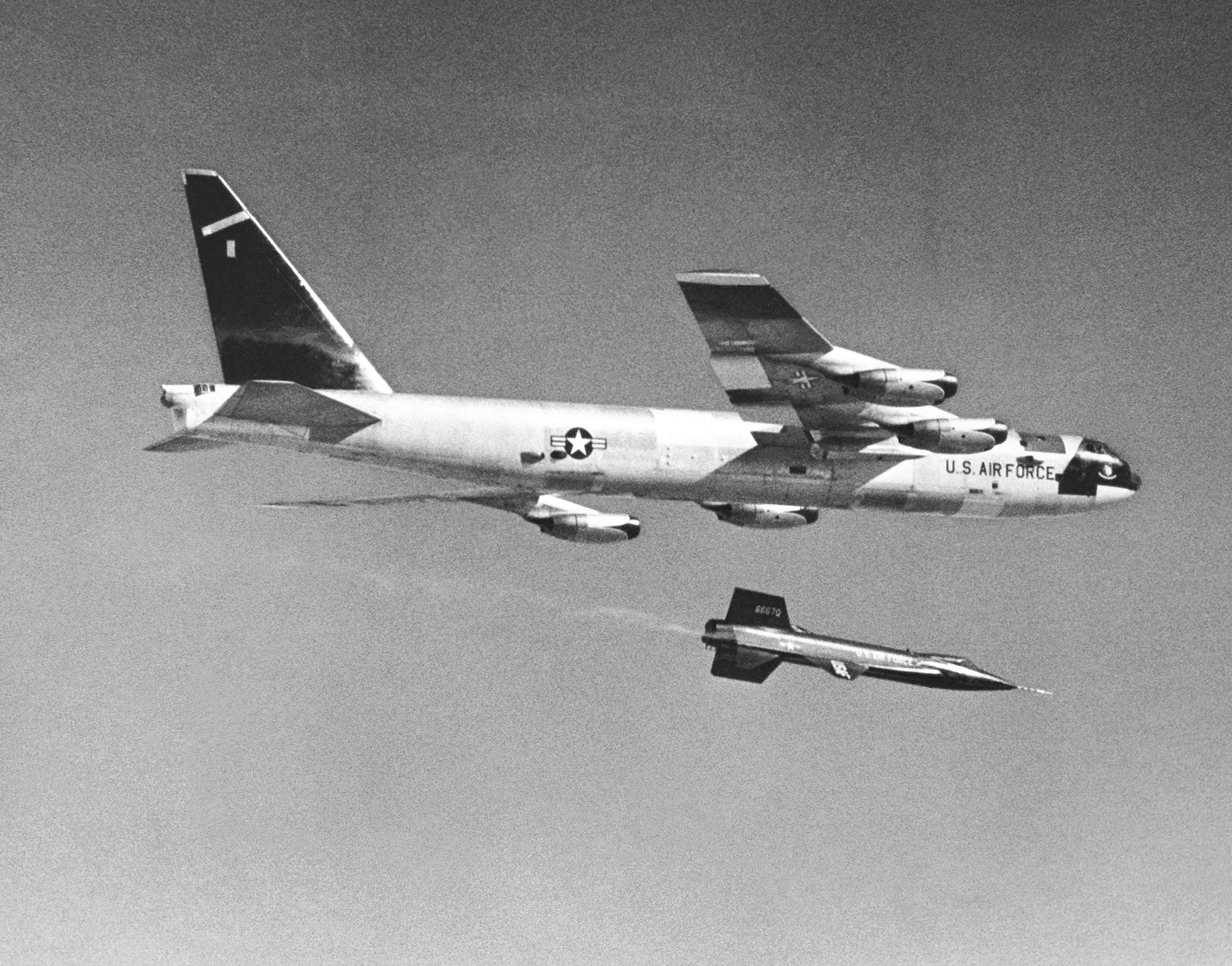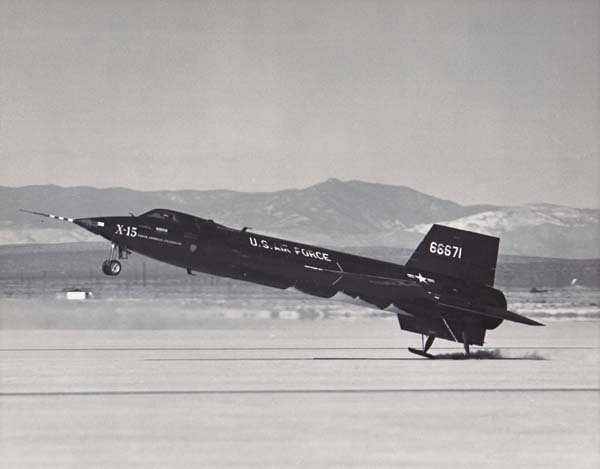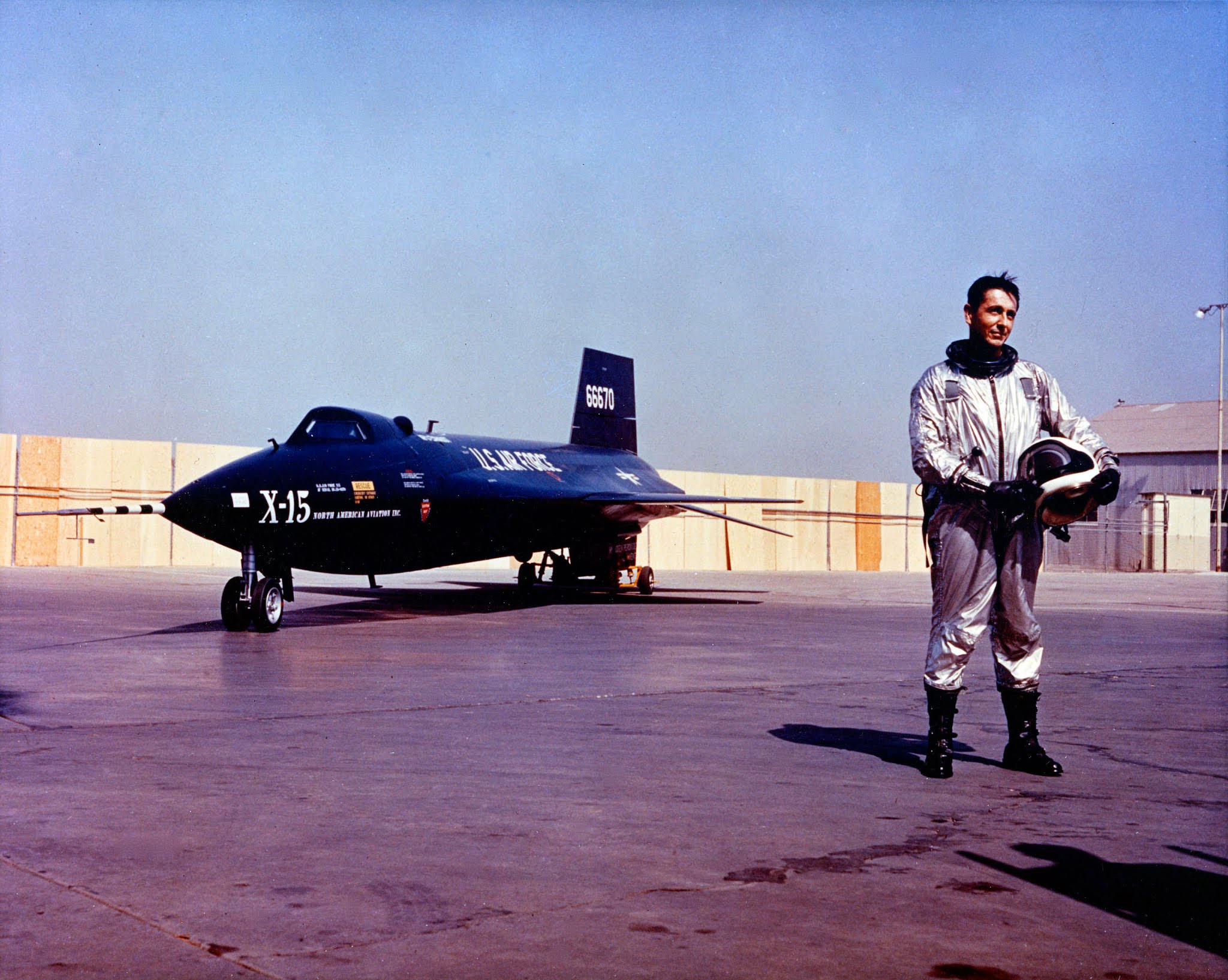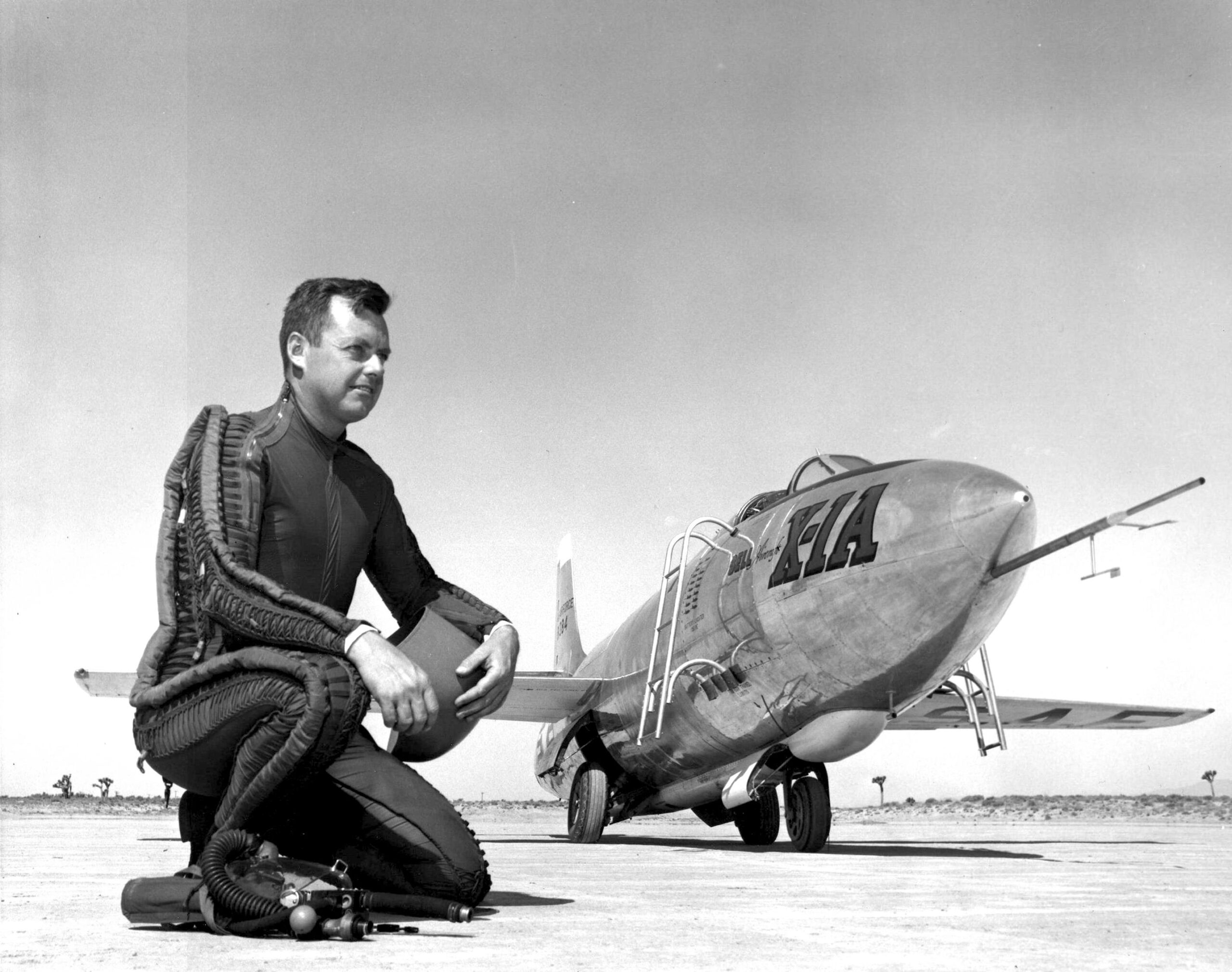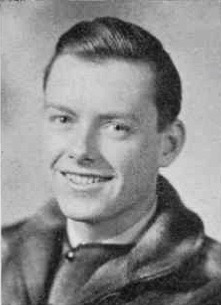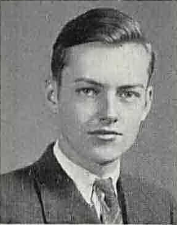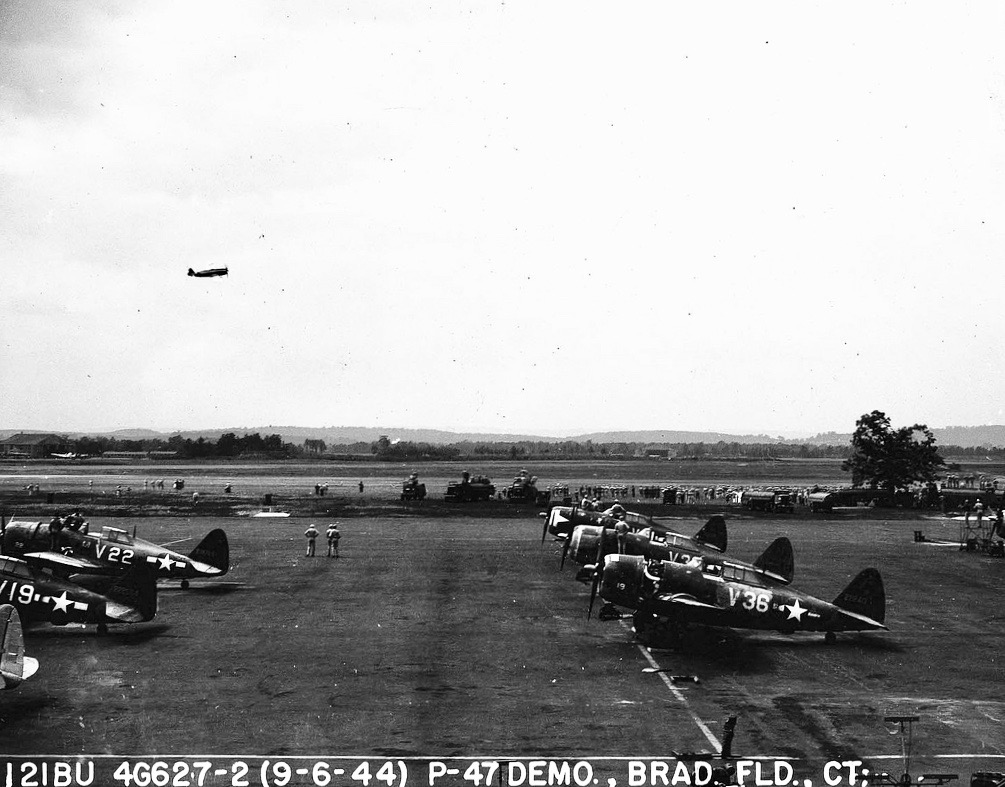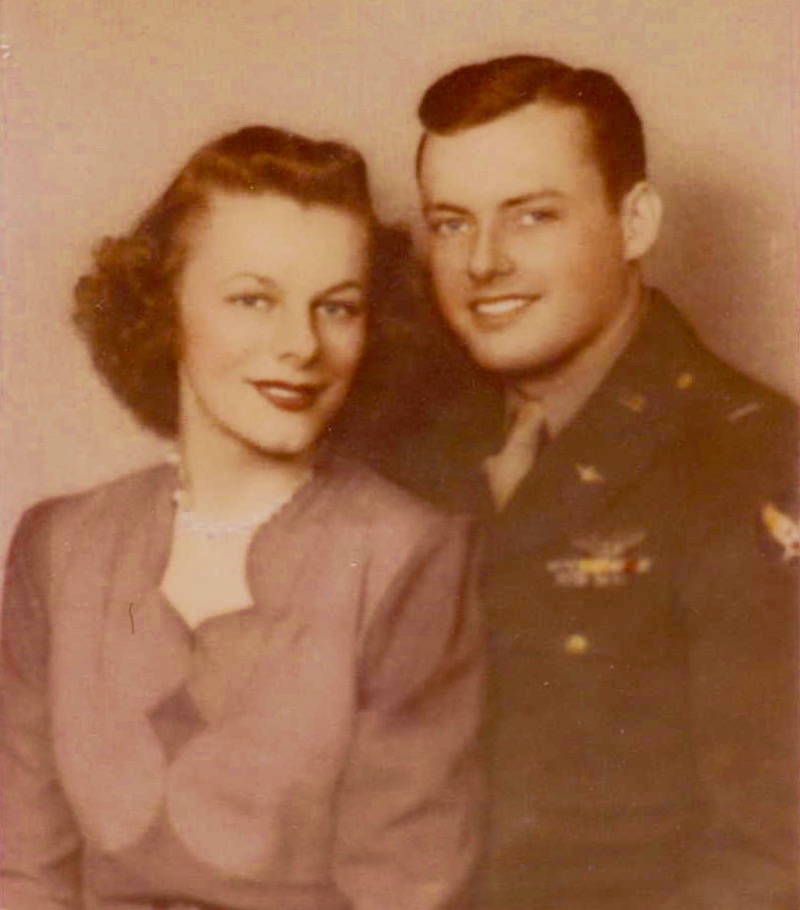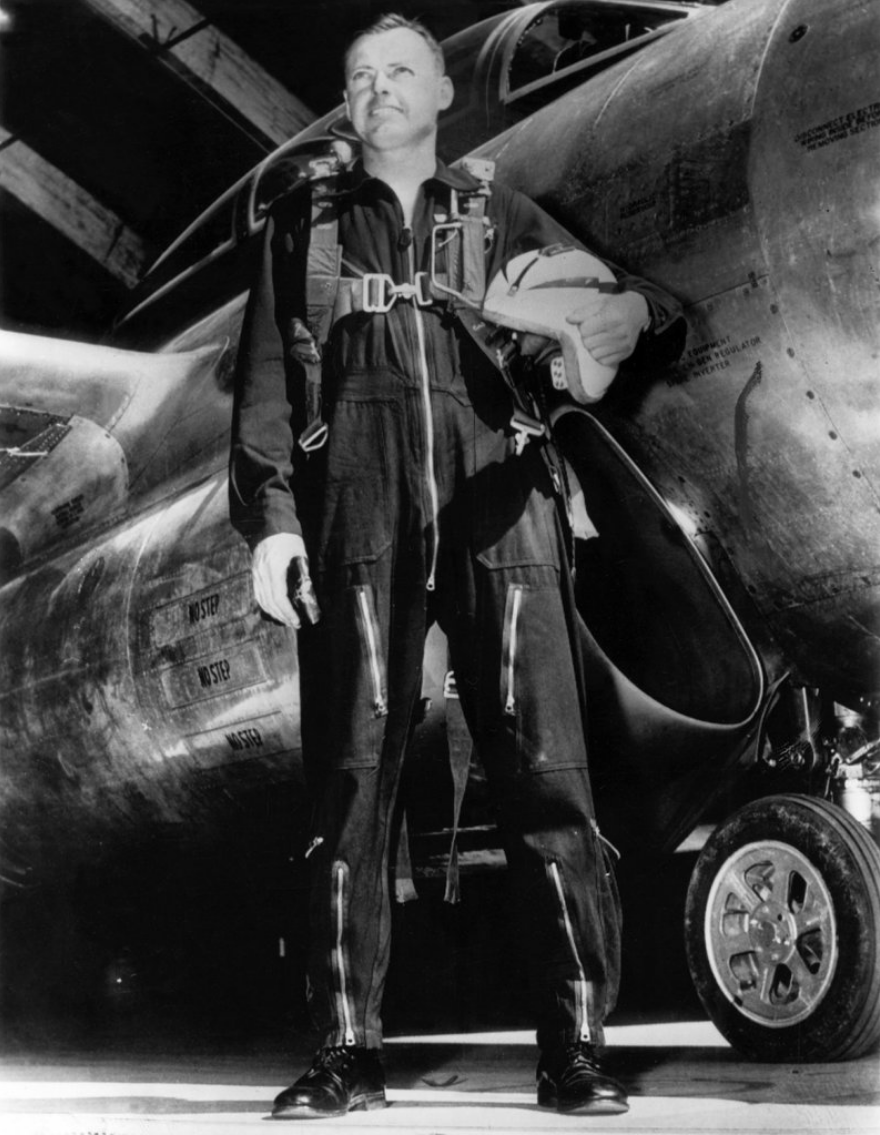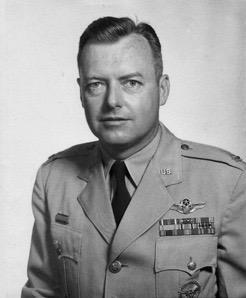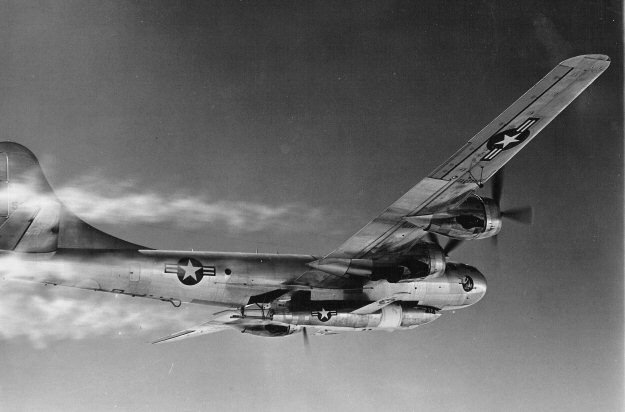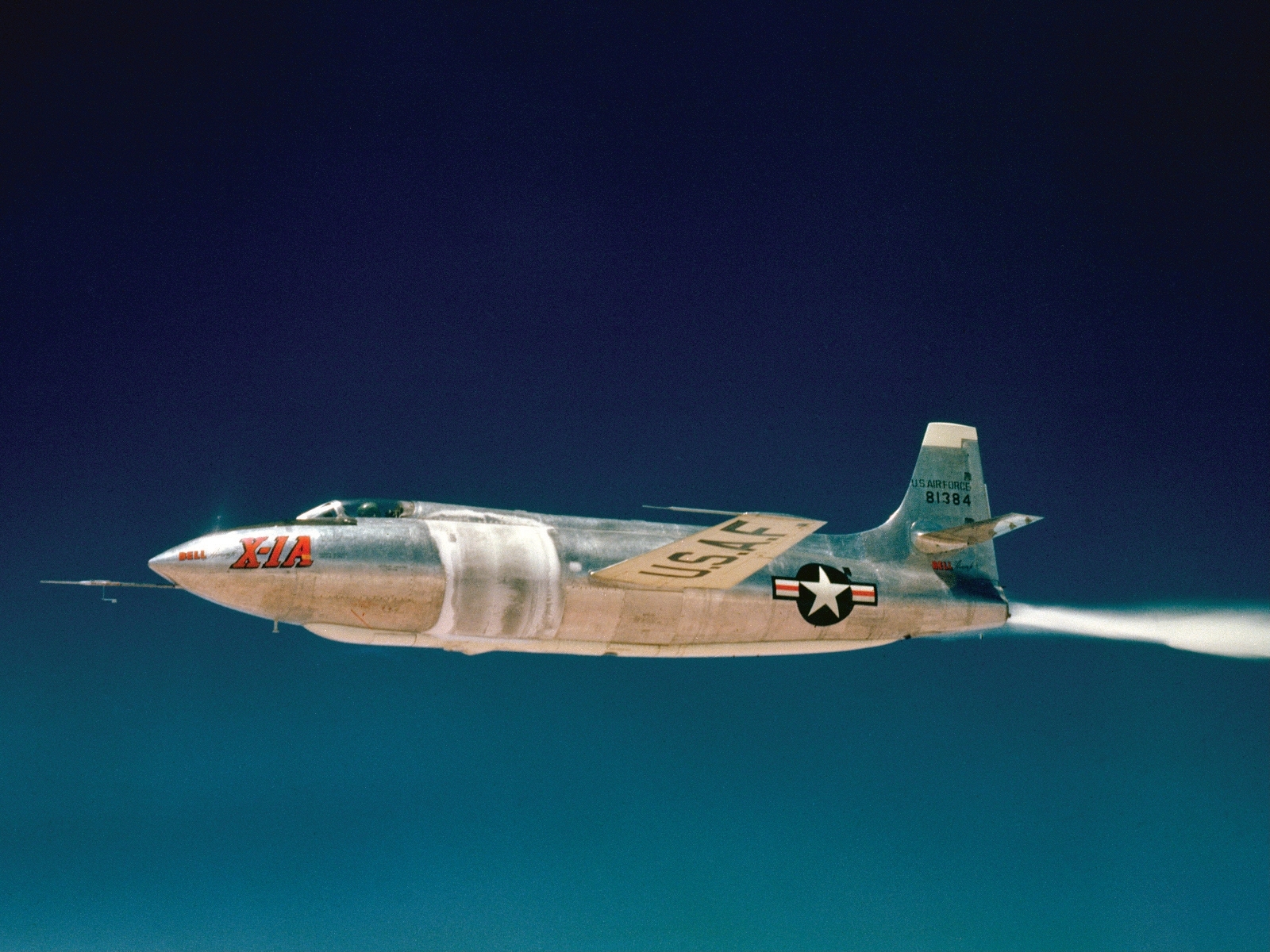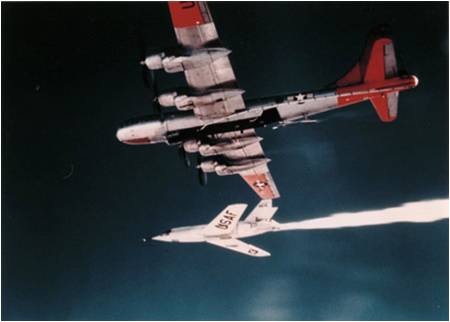
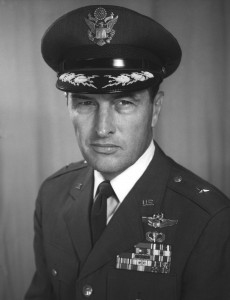
23 July 1956: Lieutenant Colonel Frank Kendall “Pete” Everest, United States Air Force, became “The Fastest Man Alive” when he flew the USAF/NACA/Bell X-2 rocket plane, serial number 46-674, to Mach 2.87 (1,957 miles per hour, 3,150 kilometers per hour) at 87,808 feet (26,764 meters). The X-2 was air-dropped from Boeing EB-50D Superfortress 48-096, near Edwards Air Force Base, California.
The X-2 was a joint project of the U.S. Air Force and NACA (the National Advisory Committee for Aeronautics, the predecessor of NASA). The rocketplane was designed and built by Bell Aircraft Corporation of Buffalo, New York, to explore supersonic flight at speeds beyond the capabilities of the earlier Bell X-1 and Douglas D-558-2 Skyrocket. In addition to the aerodynamic effects of speeds in the Mach 2.0–Mach 3.0 range, engineers knew that the high temperatures created by aerodynamic friction would be a problem, so the aircraft was built from Stainless Steel and K-Monel, a copper-nickel alloy.
The Bell Aircraft Corporation X-2 was 37 feet, 10 inches (11.532 meters) long with a wingspan of 32 feet, 3 inches (9.830 meters) and height of 11 feet, 10 inches (3.607 meters). Its empty weight was 12,375 pounds (5,613 kilograms) and loaded weight was 24,910 pounds (11,299 kilograms).
The X-2 was powered by a throttleable Curtiss-Wright XLR25-CW-1 rocket engine that produced 2,500–15,000 pounds of thrust (11.12–66.72 kilonewtons) burning alcohol and liquid oxygen. The engine used two rocket chambers and had pneumatic, electrical and mechanical controls. The smaller chamber could produce a maximum 5,000 pounds of thrust, and the larger, 10,000 pounds (22.24 and 44.48 likonewtons, respectively). Professor Robert H. Goddard, “The Father of Modern Rocketry,” authorized Curtiss-Wright to use his patents, and his rocketry team went to work for the Curtiss-Wright Rocket Department. Royalties for use of the patents were paid to the Guggenheim Foundation and Clark university. Professor Goddard died before he could also make the move
Rather than use its limited fuel capacity to take off and climb to altitude, the X-2 was dropped from a modified heavy bomber as had been the earlier rocketplanes. The launch altitude was 30,000 feet (9,144 meters). After the fuel was exhausted, the X-2 glided to a touchdown on Rogers Dry Lake at Edwards Air Force Base.
A four-engine Boeing B-50A Superfortress bomber, serial number 46-011, was modified as the ”mothership.” A second Superfortress, B-50D-95-BO 48-096, was also modified to carry the X-2, and was redesignated EB-50D. During the flight test program, the X-2 reached a maximum speed of Mach 3.196 (2,094 miles per hour, 3,370 kilometers per hour) and a maximum altitude of 126,200 feet (38,466 meters).
Frank Kendall Everest was a fighter pilot and flight instructor during World War II. He flew combat missions in both the Mediterranean and China-Burma-India Theaters of Operation. In May 1945 he was shot down. Everest was captured by the Japanese, held as a prisoner and tortured until the end of the war. After the war, Everest flew as a test pilot at Wright-Patterson Air Force Base, Ohio, and then at Edwards Air Force Base. On 23 July 1956, he was The Fastest Man Alive. Pete Everest retired as a brigadier general in 1970, and died in 2004.
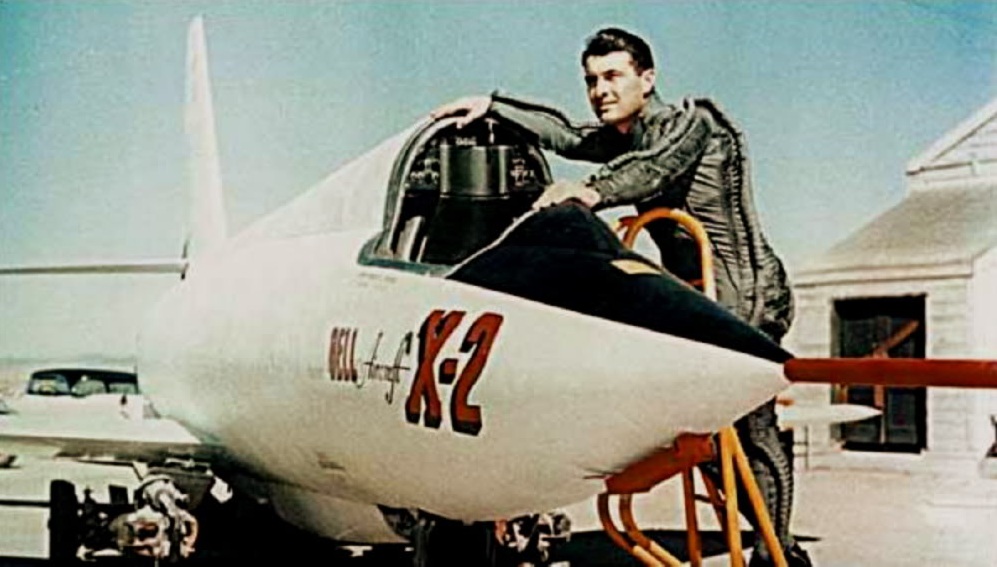
© 2017, Bryan R. Swopes
